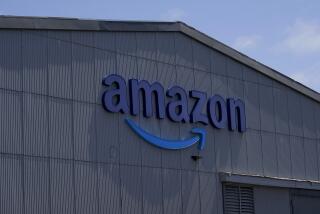S. Korean Auto Maker Sets Sights on U.S. Market
- Share via
DETROIT — As auto makers hemorrhage cash and analysts forecast mounting casualty rates in the overcrowded U.S. market, South Korea’s second-largest auto maker on Monday announced plans to enter the fray.
Kia Motors Corp., which builds the subcompact sold in America as the Ford Festiva, will unveil two new models designed for U.S. customers at the Tokyo auto show this week, a company spokesperson said.
Details of the company’s plans to set up U.S. sales operations were sketchy, but Automotive News, a trade publication, said the auto maker will establish an independent dealer network and begin selling cars here in 1993.
California car buyers will likely be a major target for the Kia models: the Sportage, a sport-utility vehicle, and the Sephia, a four-door sedan that will also be available as a convertible. Earlier this year, Kia established an office in Irvine to gather information on the American market.
Coming at a time when even General Motors Corp.--the world’s largest auto maker and guardian of the largest chunk of U.S. vehicle sales--can’t turn a profit in its U.S. automotive operations, analysts are skeptical of Kia’s chances of success.
“How many times can you divide the market and still have enough room for a new entry?” asked Clifford Swenson, an analyst with Jacobs Automotive in Little Falls, N.J. “Eventually you run out of possibilities.”
With the influx of Japanese-built vehicles during the 1980s, auto makers selling cars and trucks in the U.S. market found their profits squeezed as too much manufacturing capacity was aimed at too few buyers. The auto industry can now produce about 6 million more vehicles annually for the U.S. market than Americans will buy, forcing auto makers to lower prices, offer rebates or provide cut-rate financing to compete for sales.
In addition to establishing a sales network and brand recognition, Kia will face the difficulty of competing in a low-priced--and therefore less profitable--segment of the market. The allure of the U.S. market--the world’s largest--may have proven too difficult for Kia to resist. But Mary Ann Keller, an analyst with Furman Selz in New York, nonetheless suspects that auto makers who were attracted to the U.S. market in the 1980s will abandon it in the 1990s.
“Whereas the United States was the promised land for all auto companies just a few years ago, these same companies now are wondering if they could have done anything differently to avert financial losses,” Keller said.
More to Read
Inside the business of entertainment
The Wide Shot brings you news, analysis and insights on everything from streaming wars to production — and what it all means for the future.
You may occasionally receive promotional content from the Los Angeles Times.










